We’re truly living in the “salad days” of suppressor ownership, with competition keeping prices relatively low and the (immoral, unconstitutional) NFA approval process moving as fast as ever. In fact the subject of today’s review, the Griffin Armament M4SD-L, was approved in about 18 hours once the f’ing ATF had their hands on the paperwork. Governmental gripes aside, let’s look at the M4SD-L, how it performs and what makes it worth a recommendation.
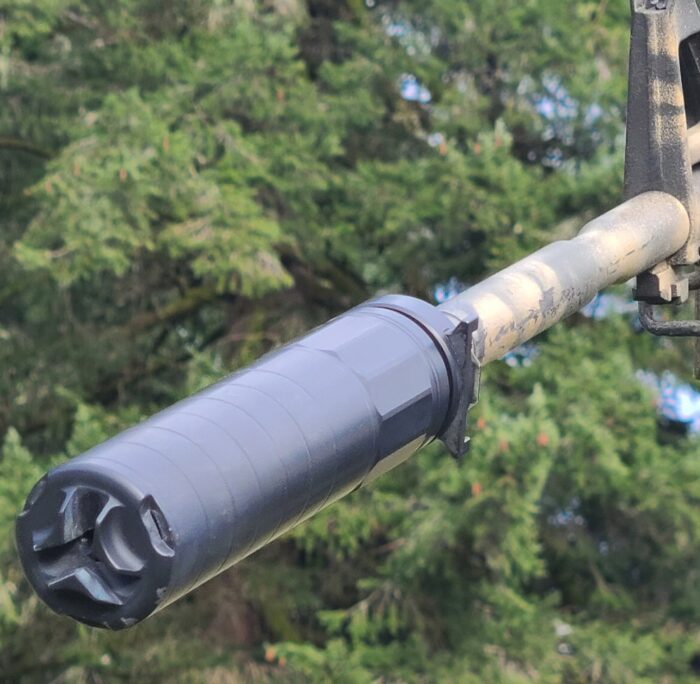
Griffin Armament M4SD-L Tech Specs and Features
- Laser-welded, tubeless design
- Rapid and versatile GATE-LOK mounting system
- Compatible with GATE-LOK or A2 Nato Spec Compensators
- 17-4 H900 heat-treated stainless steel
- Patent-pending flash reducing and flow optimized end cap
- ECO-FLOW baffle system for improved performance and shooting experience
- GATE-LOK Hammer Comp 1/2×28 5.56mm (.22 cal) muzzle device included
- ¾-in. wrench flats on muzzle devices
- Suppressor body H900 heat treated and Cerakoted
- Perpetual Lifetime Warranty
- Length: 6.5 in.
- Weight: 14.5 oz.
- Diameter: 1.5 in.
- Caliber .22 (5.56mm)
- Attachment System: GATE-LOK
- dB Rating: (133.7DB) 11.5-in. Griffin MK1, (131.7DB) 16-in. Griffin MK1
- Material: High-strength, high-temp, corrosion-resistant 17-4PH stainless steel
- Finish: High-temp Cerakote
- Full Auto Rated: Yes
- User Serviceable: No
I’d argue that there’s four main considerations when we’re looking at a modern suppressor purchase. Physical form (which includes both size and materials used), backpressure, mounting system and overall suppression performance. Let’s tackle these as they relate to the Griffin Armament M4SD-L one at a time. Price is so dependent on each customer’s situation that I leave whether or not a can is worth it to you, the reader. I’m covering how it works, you decide what you’re willing to spend.
Physical Form
It is 6.5 inches long and 14.5 ounces of steel. The M4SD-L isn’t a micro can, nor is it an overkill can for max suppression. I’d say the M4SD-L falls in the “mid-size” category, and toward the smaller end of that genre to boot. This is a fairly short suppressor, but it is extremely solid, which is par for the “tubeless, laser-welded” crowd. Not as light as a titanium can, but lighter than many other suppressors in this length, diameter and price range. Going tubeless helps save weight, at the cost of increased welding time/expense.
Backpressure
This is somewhat of a subjective category, but comparison helps us out here. Griffin Armament uses Eco-Flow baffles on the M4SD-L, which are designed to give better suppression than total “flow through” suppressors, yet better backpressure reduction than traditional baffles. Here’s a brief and informal description by Austin, owner of Griffin Armament, that took place in a discussion on AR15.com regarding Eco-Flow baffles:
We have a pair of patents in process on the cans. They use basal ports on the periphery of the baffles to create streamwise vorticity, sending a plurality of high velocity streams of gas into contact with other flow streams. The turbulence created by the extra flow through gas reduces the velocity of gas and diminishes energy, lowering sound, while improving flow through the system.
So how well does it work? Well, pretty much exactly as I’d expected from the design statement. While the Griffin Armament M4SD-L has more backpressure than the Huxwrx Flow 5.56 Ti I shot alongside it, the M4SD-L is a definite improvement over older designs with traditional baffles, like AAC’s M42000, Suppressed Armament System’s Reaper Ti and even the Griffin Armament M4SDII. There’s not a lot of gas coming back to the shooter, having tested this can on a couple of different hosts.
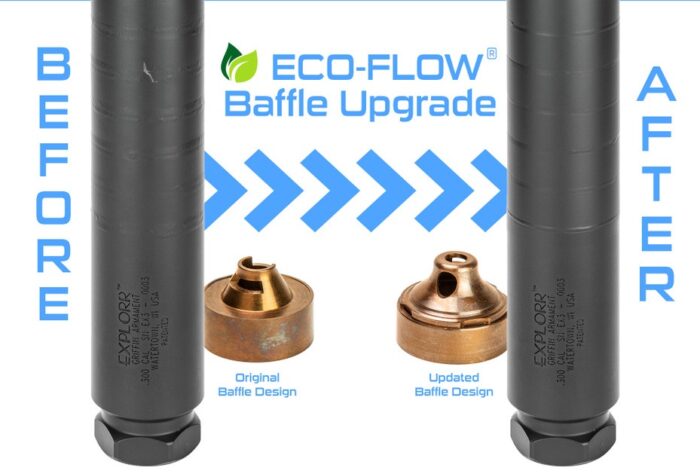
It’s worth noting that Griffin Armament also designs their MKII AR-15 series to further mitigate gas to the shooter as well.
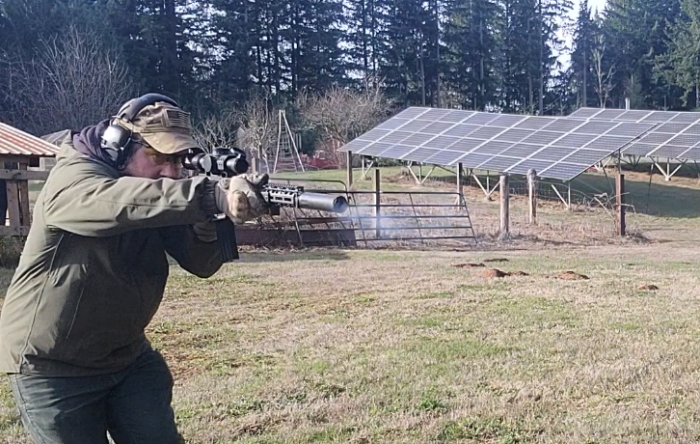
Mounting System:
Griffin Armament is using their Gate-Lok mounting system, which will be immediately familiar to anyone who used KAC’s M110 or QDSS NT4 suppressors with their Gate Latch mount, which pretty clearly influenced the Gate-Lok design.
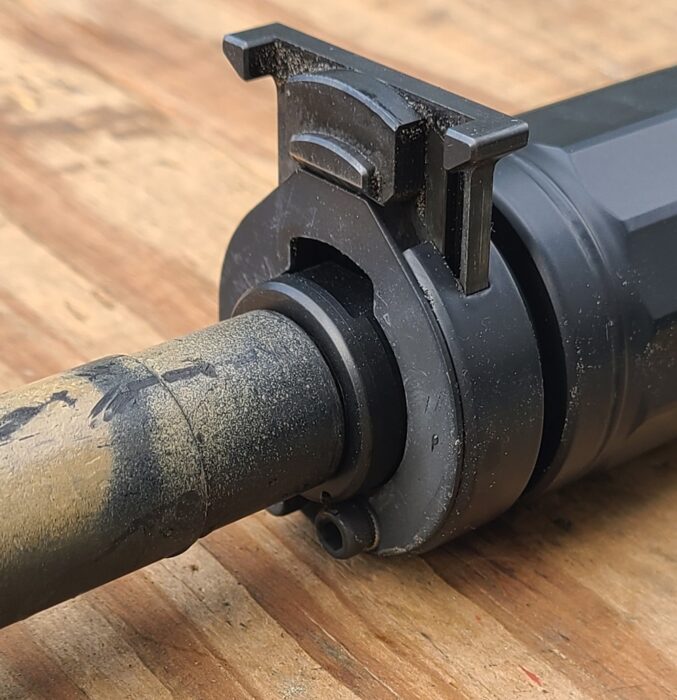
The suppressor side of the mounting system has the gate, which lifts out of the suppressor to release it, or depresses to engage the mount. The gate is held in place by a spring plate, which needs to be pushed out of the way (rearwards) to release the gate.
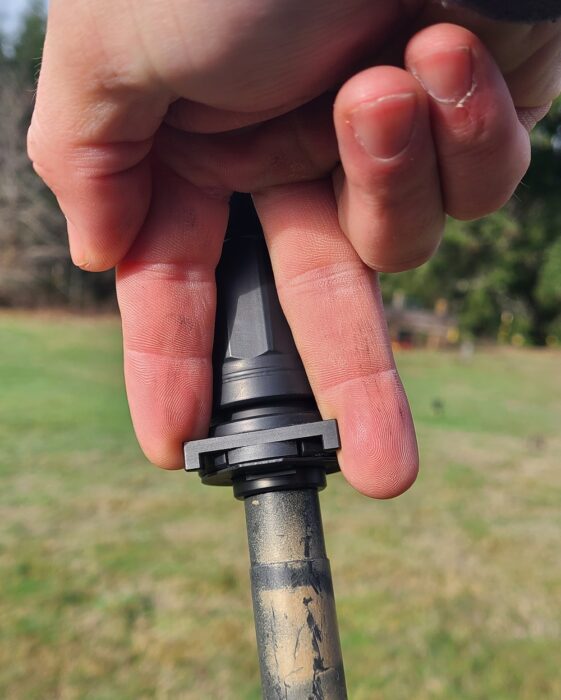
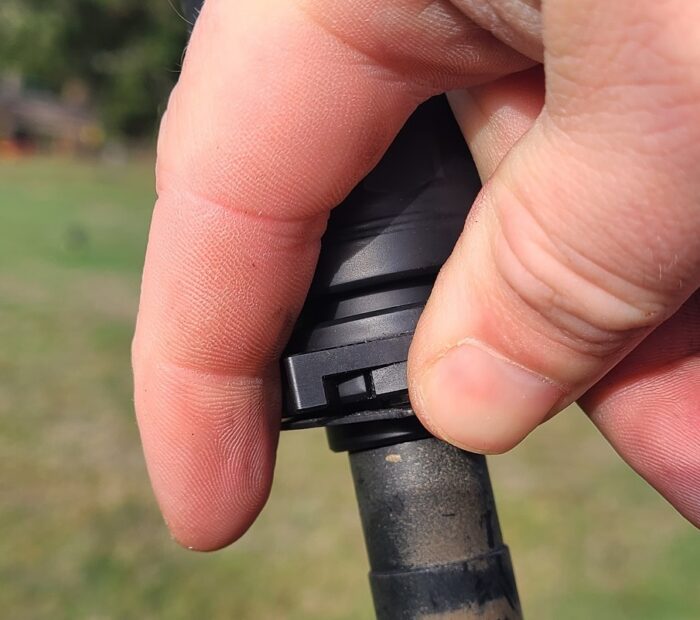
On the rifle side, the Gate-Lok interfaces with Griffin Armament’s Gate-Lok series of flash hiders and compensators, as well as standard USGI A2 flash hiders. That last item needs a little more clarification though. Not all A2 flash hiders a built totally to spec, since some manufacturers seem to figure they’re only used as flash hiders. This is why some of these A2s won’t properly mount a blank firing adaptor either.
While you’re free to check out which various A2s other M4SD-L owners have had success with (Del-Ton, according to a few Reddit users), Griffin Armament also includes a Hammer Comp with the suppressor for use on your 1/2×28 threaded barrel.
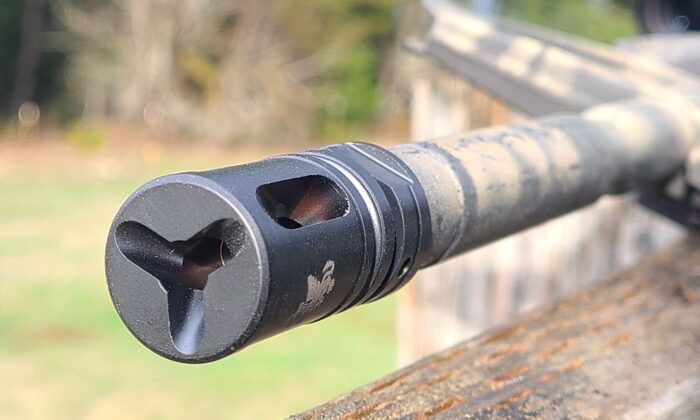
My first couple range days with the M4SD-L and the Gate-Lok mount were a touch frustrating. The tolerances were pretty tight between the can and mount, so there was some wiggling and twisting to be done. Once I’d mounted and removed the can about 25 to 30 times, the whole system eased up considerably.
There was also a small learning curve on how exactly to arrange your hand when removing the can to keep it a one-handed task. I started out certain I was screwing something up, and now everything’s running smoothly. This has turned into the fast, easy mounting system that’s advertised, with less wear/failure points than a latch system (AAC 51-, 90-tooth), and no chance of carbon lock twisting off your mount inside your can (SAS TOMB). That’s especially handy when as a reviewer, I have to swap mounts onto various rifles often and don’t use threadlocker on a mount that’s only going on the rifle for a few hours.
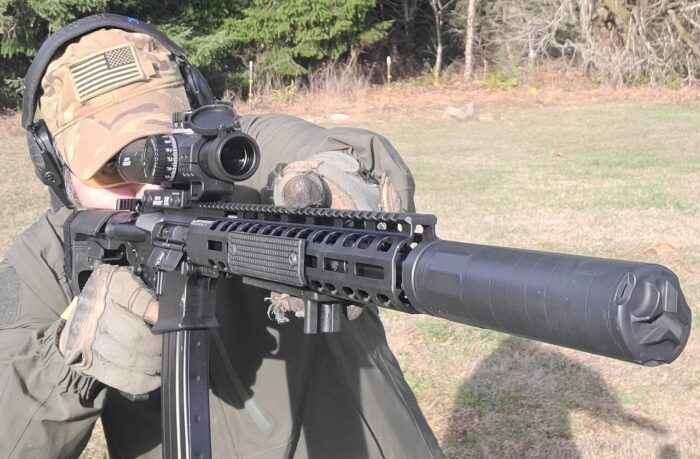
Griffin Armament also offers the Gate-Lok mounting system for Hub interfaces, in case your purchased or constructed suppressor allows for hub compatible modular mounting systems.
Suppression
Finally, we get to the big one. Overall suppression performance is the biggest factor most people will consider when shopping around for a can. Lacking extremely expensive testing machines, I’ll rely on some professionals for the objective portion, and my own ears for the subjective side.
First, you may have noticed that in the Tech Specs section, Griffin Armament has listed the following: “dB Rating: “(133.7DB) 11.5-in. Griffin MK1, (131.7DB) 16-in. Griffin MK1”. Here’s a manufacturer provided video of testing and comparison to two other cans.
Getting a .223/5.56 under 135dB is a really good start, but I understand some people won’t be convinced by manufacturer provided data. So, we continue.
For those in the know, the Silencer Summit is a big industry event, where a pretty large number of industry professionals get together to test their cans in a standardized environment. An interesting discussion about the Silencer Summit is located here.
The testing results for the M4SD-L are found here in the results of the 2024 Silencer Summit, along with dozens of other cans. I’ll let you parse through the data to whatever degree you’d like, but here’s a few notable cans the M4SD-L beat out in Mil dBa Avg (average decibel level using mil-std-1474d testing):
- HuxWrx Flow Ti (2.3 dB louder)
- Surefire SOCOM RC3 556 (4.8 dB louder)
- Otter Creek Labs Polonium K 556 (4.8 dB louder)
- Silencerco Velos LBP 5.56 (2.9 dB louder)
While not nearly an exhaustive list, this shows that the M4SD-L can definitely compete with some other popular cans on the market.
Not only does the Griffin Armament M4SD-L suppress pretty well, and have a tolerable amount of backpressure, but the tone is there. This is definitely an unscientific measurement, but one of the first things a customer will notice when shooting a can. Some suppressors have a lower pitched, more relaxed ffWoomph, while others will have a higher pitched and more pressurized PfffT. If I’m to continue my comical sound effects, the M4SD-L has a mid-toned, high-pressure noise, something of a short and sweet ffUH. Ok, I’m done.
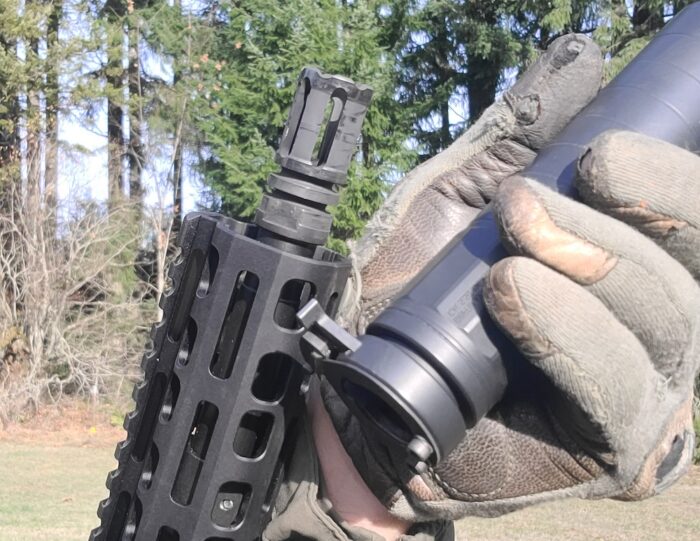
Bottom Line on the Griffin Armament M4SD-L
To recap, the Griffin Armament M4SD-L, we have a fairly short tubeless suppressor that doesn’t weigh a ton. This is a pretty quiet can that doesn’t gas you out a ton. The mounting system is effective, locks up tight, and uses dirt cheap A2 flash hiders. The can runs $994.95 from Griffin Armament or $896 from Capitol Armory, where you can use the Silencers To Your Door program for most of the U.S.
So is it worth it? That’s for each customer to decide based on your own budget, but this is definitely a can I consider a strong performer regarding suppression levels, acceptable backpressure, very good when considering the mounting platform and excellent for size/weight of a steel can. I don’t really see a reason to ever take this can off my rifle, so it’s safe to say I really like the Griffin Armament M4SD-L, and I think you will too.
Check out more articles from Jens “Rex Nanorum” Hammer or visit him on Instagram @Rexnanorum.
Need Ammo? Check out Ammo To Go, the ammunition retail sponsor of TTAG gun reviews and simply a cool online place to fulfill all your ammo needs.
Read full article here


